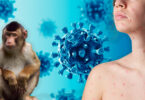Keratoconus is a non-inflammatory degenerative pathology of the cornea (the transparent part of the front face of the eye), characterized by an alteration in its shape, which becomes irregular, as a consequence of the alteration of one of its main components: a protein called collagen.
Several of the classic features of the disease, including polyopia, corneal weakness, and difficulty finding appropriate corrective lenses for the patient.
The cause of this pathology is still not completely determined, but different risk factors have been established.
While some experts consider it hereditary, others say that it is not a hereditary disease; these indicate that the probability of keratoconus in consanguinity is from 1 to 10. Among the most well-established risk factors we find family history, ethnicity (higher frequency in Asians and Arabs), mechanical factors, fundamentally the habit of scratching the eye ( patients should be warned about this risk and preferably use eye drops to avoid tingling sensation in the eyes) and eyelid hyperlaxity, the use of inappropriate contact lenses, ocular allergy, atopy and systemic diseases, such as certain tissue pathologies conjunctive (Marfan syndrome, Ehlers-Danlos syndrome, Down syndrome, neurofibromatosis, mitral valve prolapse, etc.), Leber congenital amaurosis and atopic dermatitis.).
It is typical that patients with keratoconus fail to correct their nearsightedness or farsightedness adequately by changing the prescription of their glasses or contact lenses. In most cases, people with early keratoconus have slightly blurred vision and see their doctor for corrective lenses for reading or driving.
Blurred vision and image distortion are the first symptoms that usually appear at the end of the first decade and beginning of the second. It is important to bear in mind that it is a disease that frequently affects bilaterally (although it does not affect both eyes at the same time or equally) and that it progresses slowly. The cornea thins and deforms, causing an increasingly high astigmatism that cannot be treated with glasses or contact lenses. This circumstance is one of the key points to suspect an incipient keratoconus.
Treatment in the initial phases of keratoconus consists of optical correction of astigmatism using glasses or contact lenses to improve the patient’s visual acuity. The type of contact lenses prescribed depends on the state of keratoconus. Thus, soft, soft toric or personalized lenses could be appropriate in the initial phases of the disease to correct myopia and a certain degree of astigmatism.
Although keratoconus is generally considered not to be an inflammatory pathology, recent evidence suggests that there may be some inflammatory component, so that along with topical drugs, mast cell stabilizers, antihistamines, and lubricants, immunosuppressive drugs such as topical cyclosporine.
https://www.mayoclinic.org/es-es/diseases-conditions/keratoconus/symptoms-causes/syc-20351352#:~:text=El%20queratocono%20se%20produce%20cuando,la%20luz%20y%20al%20resplandor.https://es.wikipedia.org/wiki/Queratocono#:~:text=Aunque%20generalmente%20se%20considera%20que,a%C3%B1adir%2C%20en%20el%20futuro%2C%20f%C3%A1rmacoshttps://www.ceoval.com/queratocono








